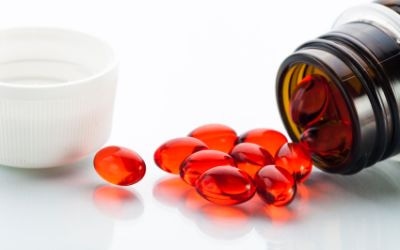Differences in CoQ10 Form
July 17, 2012

by Risa Schulman
FDA recently issued new requirements for warnings on statin drug labels, including cautions that statins may affect blood sugar levels and cause memory loss. What they did not say is that statins are also well known to deplete the body's store of coenzyme Q10 (CoQ10), which can result in chronic fatigue and muscle pain. It wasn't included yet, that is; in Canada, statin drug labels currently include a black box warning recommending they be taken in conjunction with CoQ10 for this reason.
CoQ10 is formed naturally in the body and plays a key role in the transformation of food into energy; however, the body prefers to transport CoQ10 in the form of ubiquinol and converts CoQ10 to ubiquinol quickly. More than 95 percent of the CoQ10 in the blood of a healthy individual is found in the form of ubiquinol.
Once carried to the cells, ubiquinol has its main function in the mitochondria, or the food burning engine that is present in almost every cell of the body. To capture the energy in, say, the starch from a meal of pasta, the body breaks the carbon bonds of the glucose that makes up the starch, releasing their energy in the form of electrons. The electrons are then harnessed. The capturing mechanism for these electrons looks like a line of crisis workers who are quickly passing sandbags one to the next to get them to the site of use. Ubiquinol/CoQ10 is like one of these workers, and what it is passing is the electrons themselves. They are actually two versions of the same compound, where ubiquinol has two more electrons than CcoQ10, only because as it passes electrons down the chain, it flips back and forth between having two electrons, which we call ubiquinol, and not having them, which we call CoQ10.
If the body is depleted of CoQ10, its ability to produce energy is greatly compromised (think a break in the sandbag worker line). It now makes sense that without enough ubiquinol, a person can have chronic fatigue and muscle pain. Since vital organs such as the heart have greater energy demand and more mitochondria, low ubiquinol levels can compromise heart health and overall bodily functioning.
Ubiquinol can be depleted in a few different ways. As the body ages, it naturally produces less CoQ10. Chronic diseases, such as heart disease and diabetes, are also accompanied by a decline in CoQ10 levels. And, as we mentioned, stain drugs deplete CoQ10 by shutting down its production in the body.
Replenishing the body with ubiquinol can therefore be an important way to restore energy levels and keep the cardiovascular system healthy. Since it is difficult to obtain adequate levels from the diet, supplementation can be very useful.
Some people cannot perform the transition from CoQ10 to ubiquinol efficiently due to compromised activity of the enzyme in charge of facilitating the transition (CoQ10 reductase). This is seen as people age, and also in the case of a polymorphism in the gene for CoQ10 reductase (called NQ01) that causes the enzyme to act less efficiently.
Lastly, because of those two extra electrons, ubiquinol can act as an antioxidant, whereas CoQ10 does not. In fact, ubiquinol is a crucial antioxidant in the mitochondria, where it mops up free radicals the body naturally produces as a result of burning food for energy (just like a car engine after the burning of gas for energy gives off exhaust that is full of free radicals). Even more, ubiquinol is one of the few antioxidants in the body that is lipid soluble, meaning, it can act in the lipid parts of the body, such as cell membranes and low density lipoprotein (LDL, i.e., "bad") cholesterol. It also recycles that other very important lipid-soluble antioxidant, vitamin E.
It would seem the proper intake levels of ubiquinol should be lower than what has been recommended for CoQ10. In fact, the level that has been shown in a to be most efficacious is 200 to 300 mg, similar to the amount that has been recommended for CoQ10 (Regul Toxicol Pharmacol. 2007 Feb;47(1):19-28). At these levels, the amount of ubiquinol in the blood increases for two weeks, and then plateaus by four weeks. If supplementation is discontinued, blood concentrations fall back to the original levels. So why is the recommended intake level of ubiquinol the same as CoQ10? The classic intake level for CoQ10 was based on an incomplete understanding of its absorption and of the body's requirements. As research has improved our understanding in the last few years, the recommended intake for CoQ10 has increased to 400 to 600 mg, which is now available on the market.
Risa Schulman, Ph.D., is president of Tap~Root, a New York-based consulting firm serving the functional food and dietary supplement industries.
You May Also Like




.png?width=800&auto=webp&quality=80&disable=upscale)